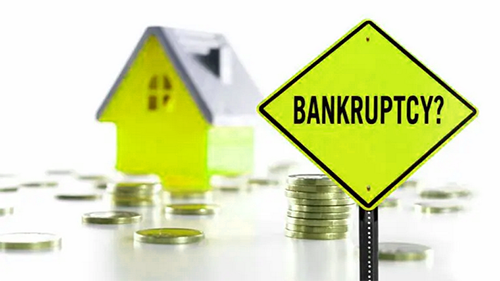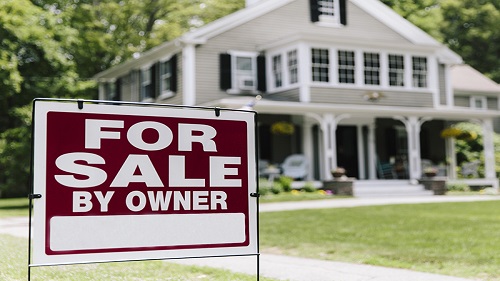
Mortgage Dove
What You Need To Know Before Buying A House After Bankruptcy
Do you have bankruptcy on your record? If that is the case, it may seem impossible to return to financial normalcy. However, bankruptcy is not actually a permanent black mark on your credit report. You can even buy a home after bankruptcy if you know which steps to take.
In this article, we will examine the process of buying a home after bankruptcy in more detail. Also, we'll tell you how long you need to wait after filing to apply for a loan and how to maximize your chances of success.
Understanding the Process of Buying a House After Bankruptcy
Getting Started: The Bankruptcy Discharge
Do you have to wait a long time before you can buy a house after bankruptcy? The answer varies. However, the bankruptcy record must first get discharged in order to even qualify for a mortgage loan request. A bankruptcy discharge releases you (the debtor) from liability for certain debts and prevents creditors from trying to collect them.
Simply put, you have no obligation to pay the discharged debts, and your creditors cannot take action against you. The discharge of your debts is only one step in the bankruptcy process. Even though it doesn’t necessarily mean that your case is over, it is something lenders will want to see. The court usually closes a bankruptcy case shortly after the discharge.
Check Your Credit Report
The credit report is a detailed account of your credit history that lenders use to determine your creditworthiness. Although bankruptcy filings remain on your credit report for ten years, you do not have to wait that long to get a mortgage.
You can accelerate the process by ensuring that your credit report is accurate and up to date. It’s free to check: Every year, you can get a free credit report from each of the “big three” credit rating agencies— Equifax , Experian, and TransUnion.
You may want to stagger your requests to receive a credit report every four months (instead of all at once). By doing so, you will be able to monitor your credit report throughout the year. Using one of the best credit monitoring services could also be helpful.
Watch your credit report for debts that have already been repaid or discharged. By law, a creditor may not report any debt discharged in bankruptcy as currently owed, late, outstanding, having a balance due, or converted to a new type of debt (e.g., having new account numbers). You should contact the credit agency immediately if something like this appears on your credit report.
Other mistakes to look for:
- Information that is not yours due to similar names/addresses or incorrect Social Security numbers
- Incorrect account information due to identity theft
- Information from a former spouse (which does not belong to your report anymore)
- Outdated information
- Wrong notations for closed accounts (for example, an account you closed that appears to have been closed by a creditor)
- Accounts not included in your bankruptcy filing but listed as part of it
Rebuild Your Credit
To qualify for a mortgage, you must prove to lenders that you can repay your debts. After bankruptcy, you may have limited credit options. Installment loans and secured credit cards are two ways to start rebuilding your credit.
Secured credit cards are those backed by a savings account, which serves as collateral for the credit line on the card. The credit limit depends on your previous credit history and how much money you have deposited in the account.
If you fall behind on your payments—something you should avoid at all costs, especially if you’re trying to prove you can repay your debt—your creditor will reduce your credit limit and draw from your savings account. Unlike most debit cards, secured credit cards report your activity to credit agencies, allowing you to rebuild your credit.
An installment loan requires you to make consistent monthly payments that include a portion of the principal and interest. Car loans and personal loans are examples of installment loans. To rebuild your credit with an installment loan, it goes without saying that you must make your payments on time and in full each month. Otherwise, your credit could suffer even further damage. Before obtaining an installment loan, ensure that you can afford the payments.
The Right Timing
While you may qualify for a mortgage sooner, it’s better to wait two years following the bankruptcy, as it is likely that you will get better terms, including a better interest rate. It is important to remember that even a slight difference in the interest rate can significantly affect your monthly payment and the total cost of your home.
For instance, if you have a $200,000 30-year fixed-rate mortgage at 4.5%, your monthly payment would be $1,013.37, and your interest would be $164,813, bringing the total cost of the home to $364,813. With the same loan at 4%, your monthly payment would drop to $954.83, interest would be $143,739, and the total cost of the home would drop to $343,739, saving you more than $21,000.
A Guide To Applying For A Mortgage After Bankruptcy
Now, here are the specific steps you’ll follow when you apply for your loan.
Step 1: Repair Your Credit
Your credit score decreases if you have a bankruptcy on your credit report. If you have a credit score of 580 points or less, you will need to improve your credit to meet the minimum credit score requirement.
Here are some basic steps you can take to rebuild your credit:
- Re-establish your credit. An excellent way to re-establish your credit after Chapter 7 or 13 bankruptcy is to get a secured credit card. Secured credit cards require you to deposit with your credit card company.
- This deposit becomes your line of credit. Each month, you make payments on your account and pay off your debt. You can get a secured credit card despite a low credit score, even after a bankruptcy.
- Pay down your debt. As soon as your bankruptcy closes, you should use any extra funds available to pay off your debt. Your creditors will see that you are serious about improving your financial situation and raising your credit score. A lower level of debt can also help you qualify for a mortgage .
- Pay all your bills on time. Making your monthly credit card and loan payments on time is the fastest and easiest way to raise your credit score. You may wish to consider signing up for auto-pay if you have difficulty keeping track of your due dates. You can set up auto-pay on most credit cards and loans, automatically deducting your minimum payment when it is due.
Step 2: Compose A Bankruptcy Explanation Letter
Each time a lender issues a mortgage, they assume a risk. Your lender will carefully review your finances when you apply for a loan to ensure you can make your monthly mortgage payments on time.
Of course, having bankruptcy on your financial record is a major red flag. You can raise your chances of getting a mortgage after bankruptcy by writing a letter of explanation. A letter of explanation provides information to your lender about your bankruptcy and why you needed to declare it.
Include a description of the circumstances leading to your filing and how your financial life has changed since you filed. You'll also need to explain how you have taken steps to prevent future bankruptcy, such as paying off debt and saving for emergencies.
You don't need a letter of explanation to get a mortgage after bankruptcy, but it can help your lender see the bigger picture. When you request pre-approval, include your explanation letter with your application.
Step 3: Get Pre-approved
After you have gone through the waiting period and your finances are in order, you can apply for a mortgage pre-approval. In a pre-approval letter, the lender tells you how much money you can borrow for a mortgage. Getting pre-approved is essential for a couple of reasons:
- First, a pre-approval letter lets you know which homes are in your budget and allows you to narrow your property search.
- Second, a pre-approval tells real estate agents and sellers that you can secure the funding you need to buy the home you want to make an offer on. It can be a crucial factor to consider after bankruptcy.
Your lender will ask you for additional financial documentation when you apply for pre-approval. You can get pre-approved faster if you already have your documents in order before you apply. Among the documents your lender will likely ask for are your last two:
- W-2s
- Bank statements
- Pay stubs
Keep in mind that pre-approval and pre-qualification aren’t the same. Pre-qualifications usually don’t require asset verification. Therefore, this means that they often hold less weight than pre-approval. Be sure to get pre-approved – not pre-qualified.
Step 4: Respond To Lender Inquiries
Once you submit your pre-approval application, your lender will handle the rest. Your lender will examine your income, assets, debt, and credit to see if you qualify for a mortgage. If you appear to be a good candidate, your lender will send you a pre-approval letter. You can use your letter to begin shopping for a home.
Your lender may have to contact you to ask questions about items on your credit report. This is especially common following an adverse financial event, such as bankruptcy. To increase your chances of approval, you should be honest and respond to your lender's inquiries as quickly as possible.
The Bottom Line
It’s entirely possible to get a mortgage after bankruptcy. However, depending on your loan type and type of bankruptcy, you may need to wait a certain period after your bankruptcy is dismissed or discharged.
"Mortgage Dove makes home financing convenient for every American. You can count on us to provide a home buying experience tailored to your personal needs and financial situation. We strive to give you the peace of mind that your home financing goals can be achieved.”

Mortgage®
www.mortgagedove.com



